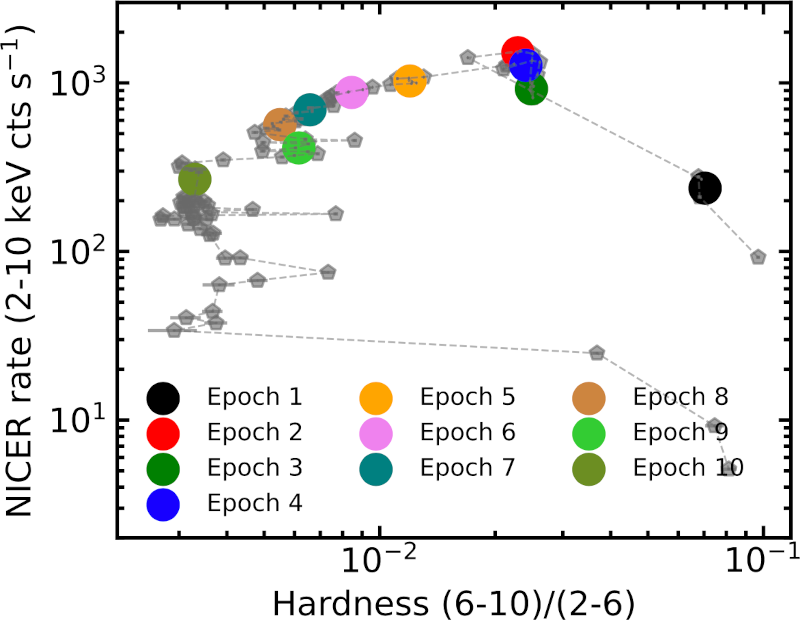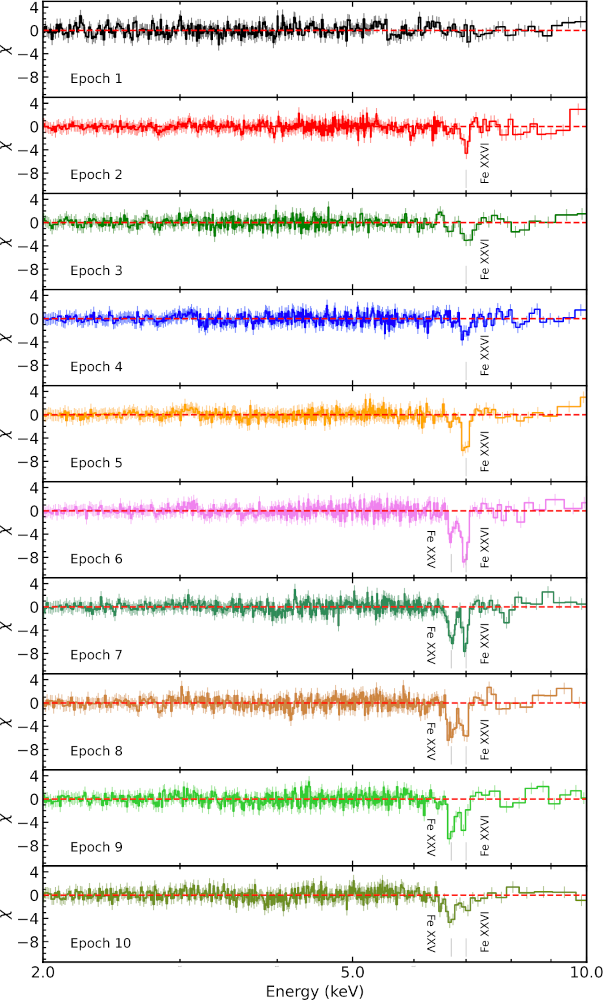NICER / ISS Science Nugget
for December 12, 2024
Winds of change
In May 2021, JAXA's MAXI payload reported X-ray emission from a previously unknown source; NICER and other telescopes promptly followed up and determined that the newly discovered system, MAXI J1803-298, was a black hole X-ray binary (BHXRB) in outburst. NICER tracked the outburst for several months, until J1803 returned to its quiescent state. Z. Zhang (Fudan Univ., China) and collaborators present results of a spectroscopic analysis of this NICER dataset in a peer-reviewed paper recently published in The Astrophysical Journal.
As black holes in binary systems draw material from their companion stars, X-ray emission properties evolve through a series of accretion states known as hard, intermediate, and soft. Past studies of BH binaries have established that, in addition to the matter captured by the black hole, a portion of the flow from the companion star is blown away from the system; such "winds" may be cool (non-ionized, seen in infrared or visible light) or hot (ionized, seen in X-rays), and they may be propelled outward by a combination of processes, including their own thermal energy, radiation pressure from the hot inner parts of the accretion flow, and energy imparted by magnetic fields. They are most commonly observed when the plane of the accretion disk is seen approximately edge-on from Earth's vantage point. Investigations with X-rays and in other bands have shown that we see MAXI J1803 from this perspective. The telltale signature of winds is absorption: specific wavelengths of light from the accretion disk are absorbed, and often blueshifted, by intervening material moving toward us.
Zhang et al. show that X-ray absorption features of iron atoms are seen by NICER from MAXI J1803 beginning during the intermediate state (Epochs 2-4) - the spectrum in the hard state (Epoch 1) is featureless - and evolving to include a different ionization state of iron in the soft state (Epochs 5-10). These spectral transitions, coupled with the emergence and disappearance of timing features such as quasi-periodic oscillations, provide a new view of the properties of accretion winds. Specifically, the NICER data show that the mass loss rate in the winds represents just a few percent of the mass accreted by the black hole. They also show that the transition in ionization state is likely due to a combination of the changing luminosity of X-rays from the vicinity of the black hole and the changing geometry of that illumination as the disk fills in between the intermediate and soft states. Finally, this study marks the first time a transition has been detected between cold winds seen at visible-light wavelengths and hot winds seen in X-rays.


Left: Evolution of the X-ray emission from the black-hole binary system MAXI J1803-298 during its 2021 outburst as captured by NICER. Overall brightness, in NICER's rate of X-ray photon detections (counts per second on a logarithmic scale), is on the vertical axis; the horizontal axis is a shorthand representation of the X-ray spectrum - the ratio of counts detected in the high-energy band (6-10 keV photon energy) to those in the low-energy band (2-6 keV), a measure of spectral "hardness." Evolution in time proceeds counterclockwise from near the black circle (Epoch 1), through the other colored circles, to the lower-right corner, with some zigs and zags along the way. (Credit: Zhang et al. 2024)
Right: Detailed NICER X-ray spectra for each of the time epochs indicated in Figure 1. Broad trends have been removed by fitted models to highlight the absorption lines of iron atoms that have lost 24 (Fe XXV) or 25 (Fe XXVI) of their 26 electrons in a hot plasma. A clear transition is evident around Epoch 5, where the Fe XXV line appears and eventually dominates. (Credit: Zhang et al. 2024)
<< Previous
Main Index